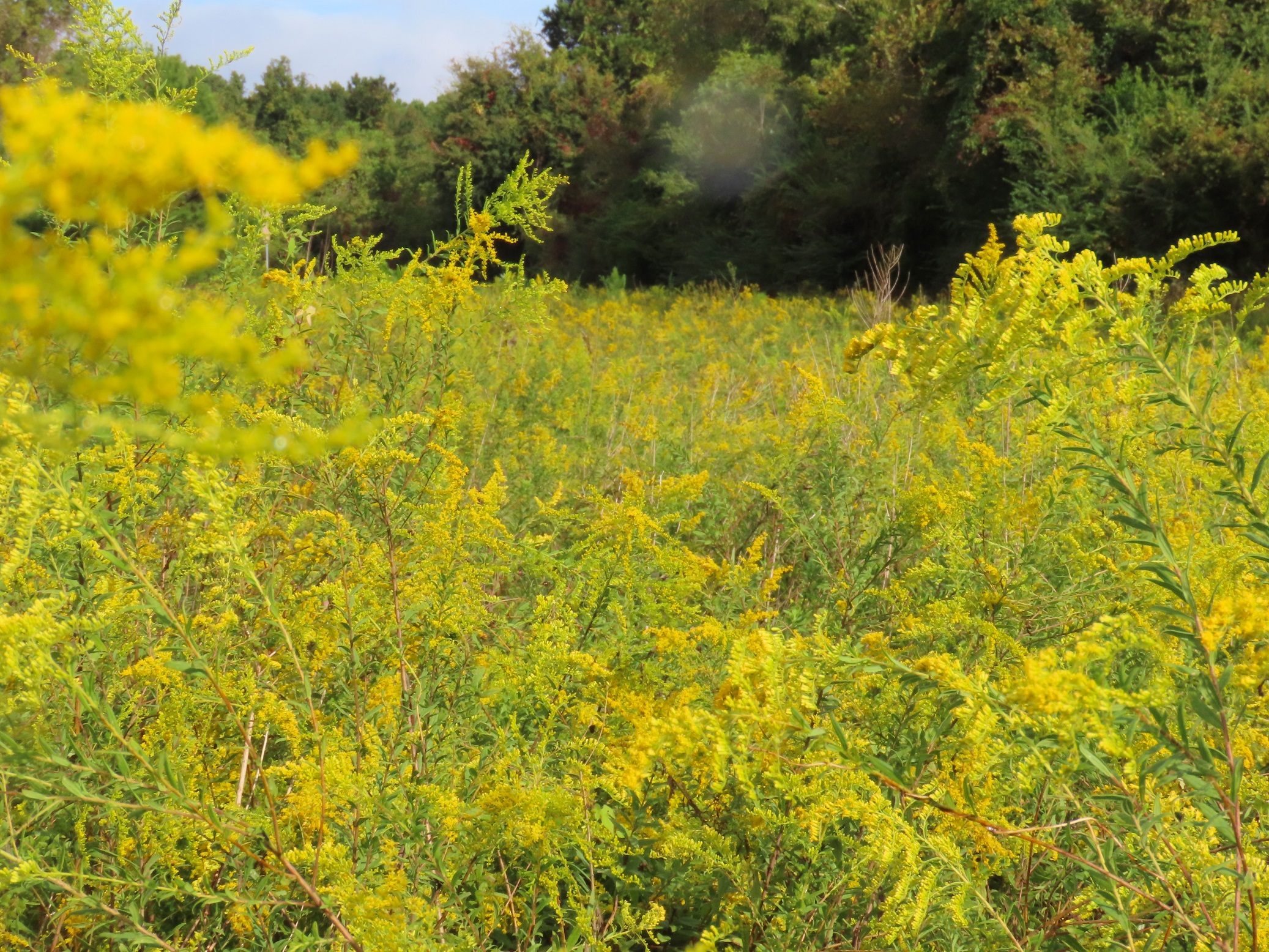
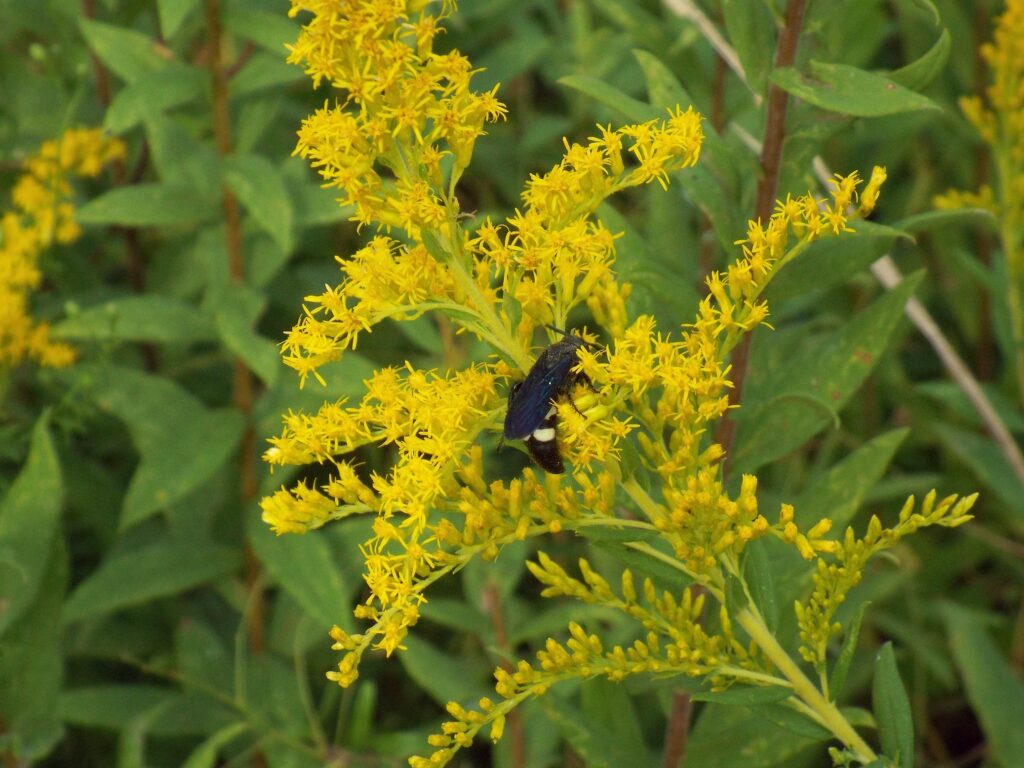
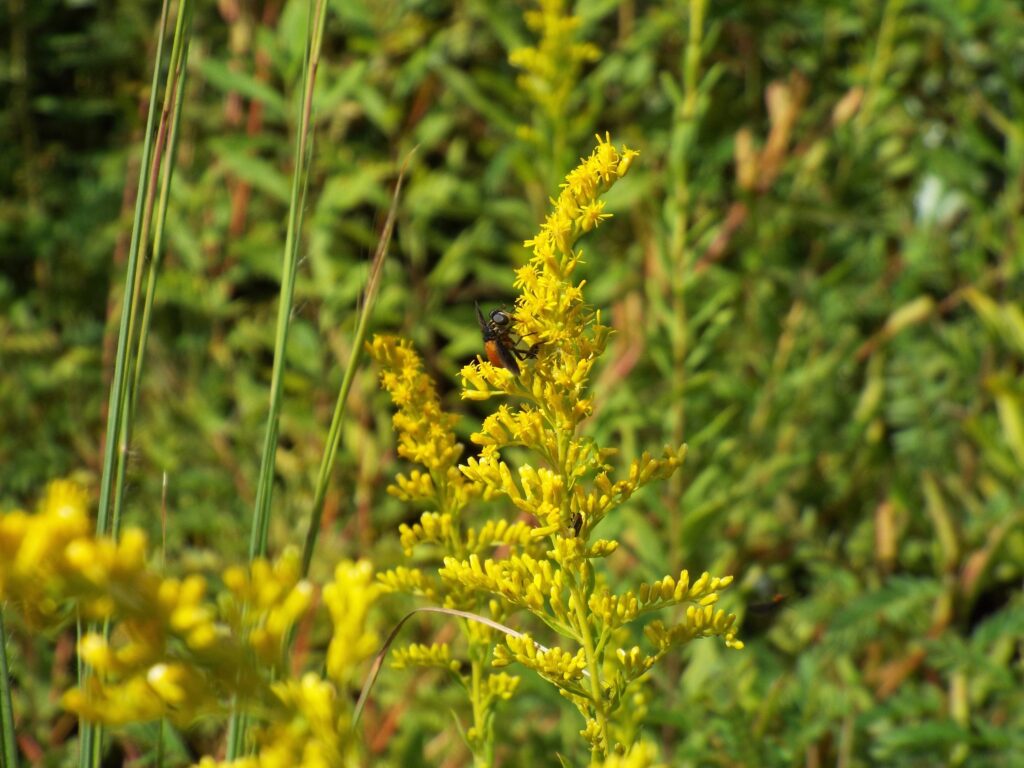

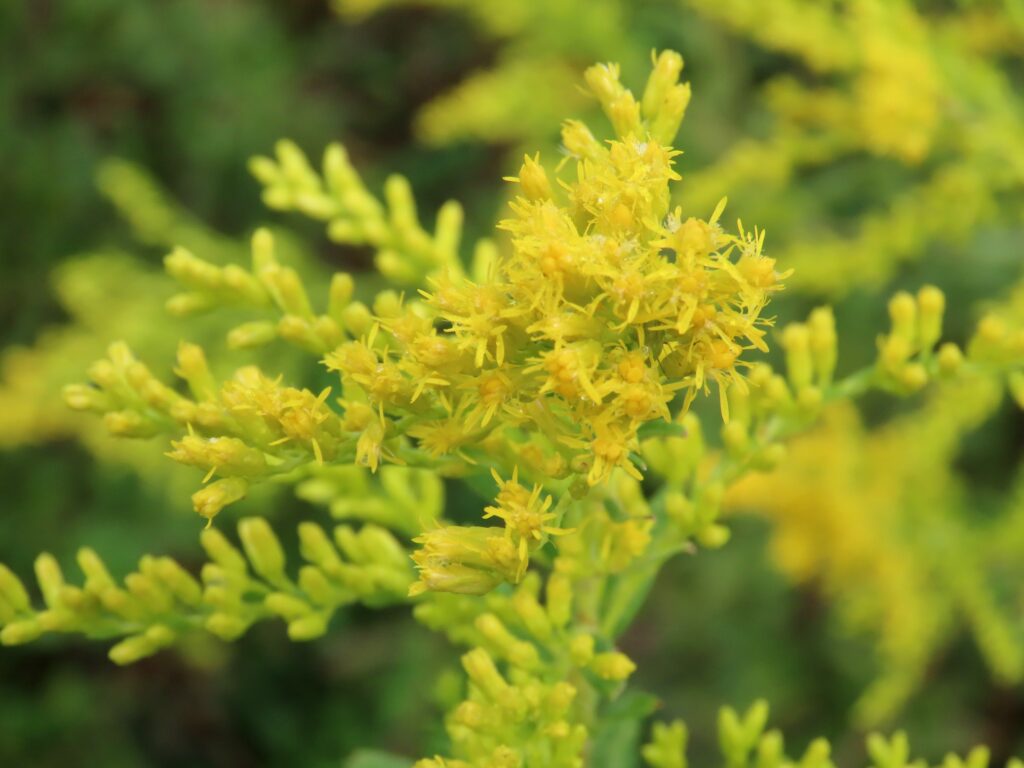
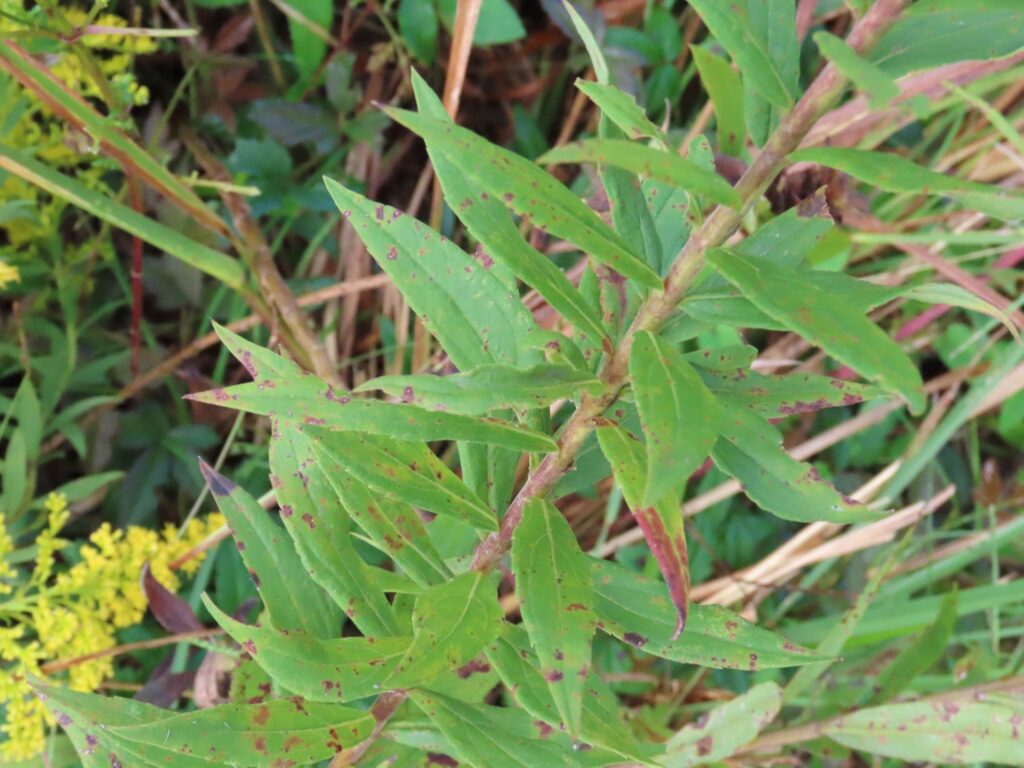
This week for Flora and Fauna Friday it’s an aureate autumn field flower, Tall Goldenrod (Solidago altissima).
Tall Goldenrod is a large, late blooming wildflower found throughout the eastern United States. It’s commonly found here in the Lowcountry in fallow fields, pasture edges, clear cuts, and other sunny open areas. Tall goldenrod grows four to five feet in height. It has straight, stiff stems which are generally a muted-burgundy in color and covered in a fine peach-fuzz. Leaves spiral up the entire length of the stem and are alternately arranged, simple, lance-shaped, and possess a lightly toothed margin and debossed veins. Tall Goldenrod is a colony forming plant and spreads aggressively underground through rhizomes. Under the right conditions, it can fill up an entire field. Tall Goldenrod blooms in fall, usually peaking the first few weeks of October. Their radiant golden-yellow flowers emerge in a pointed panicle at the top of the stem. Each flower is itself a compound flower composed of many smaller flowers. The flowers of Tall Goldenrod are frequented by bees, wasps, flies, and other pollinators.
Tall Goldenrod gets a bad rap for causing fall allergies but this is actually a case of misattribution, as Goldenrod pollen is not wind dispersed. What actually causes fall allergies are species like Common Ragweed and various warm-season grasses, which have wind dispersed pollen but no obvious flowers. Goldenrods have bright showy flowers that attract pollinating insects, and also catch our attention. The point of these showy flowers is to get insects to pick up the heavy, sticky pollen produced by Goldenrod and carry it to other Goldenrod flowers. If Goldenrod released its pollen into the air, it would have no need for these highly visible, nectar producing flowers. Goldenrod blooms at the same time as these other innocuously flowering plants and grows in the same habitats. So when we start sneezing, we notice the Goldenrod covering the landscape and lay the blame at its feet, not noticing the Bluestem and Ragweed mixed in with it.